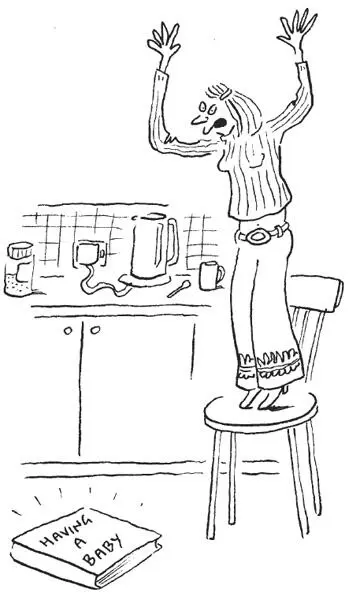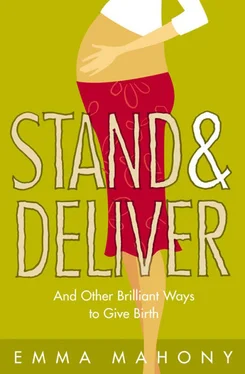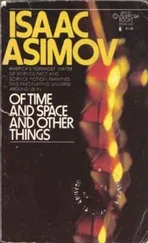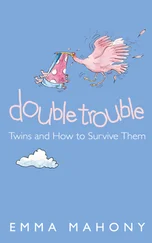Because of this indifference, the spiritual and psychological effects of being prodded and poked in hospital, or monitored like a bomb that is about to explode, have often been overlooked. The darker side of a poor birth experience may be mentioned in hushed whispers to health visitors or close friends, but new mothers are often so overwhelmed by the demands of looking after a new baby, or so grateful for its safe arrival, that they are unable to speak out for themselves at the time.
When a birth goes well, however, it is an ‘uplifting’, ‘empowering’ and ‘intoxicating’ experience, as all the birth stories in the second part of this book affirm. Someone who has felt in charge and in control of her birth is in a good frame of mind to bond with her baby, to nurture, nurse and wallow in those precious twilight few days that follow the beginnings of life. A good birth produces hormones, especially when breastfeeding, that shore up a woman’s reserves and help her to feel confident about herself and her own judgement for days, weeks, months and years afterwards. If a mother can look back at the birth and think, ‘Well, I certainly gave that my best shot,’ then she can take that confidence into dealing with the scraps in the playground that follow.
This book argues that mother and baby are so closely entwined from the beginning of the baby’s life, that anything that is good for the mother, is good for the baby, too. I don’t buy a doctor’s diagnosis that a pregnant woman is being ‘selfish’ if she wants something other than the standard hospital fare. If she’s looking after herself, she’s looking after her baby, too. It’s not for nothing that the flight crew on board an aircraft tell parents to put on their own oxygen masks first before helping their children.
The birth stories told here are all experiences with positive outcomes. This is not so the book joins the shelves of cuddly toys and sentimental parenting magazines, where impossibly beautiful models nurture perfect babies and tell of their hospital deliveries with exclamation marks and phrases like, ‘and then he just popped out!’ My view is that women will be given enough warnings and negative advice throughout their pregnancy from well-meaning medical professionals and tactless strangers without hearing more from me. I am neither a medical professional nor, I hope, a tactless stranger, just someone eager to pass on the advantages of getting it right first, second, third or fourth time around.
The women interviewed have all held on to their sense of self in spite of being bossed about by the establishment. Their stories are deeply personal and many are told in detail, sometimes with milligrammes of blood loss, in the hope that they might inspire others to try for something better. Some of the women have given birth abroad, in Spain and America, countries with even higher intervention rates than Britain. I hope their positive experiences will build up your confidence, as a few good birth stories did for me when I was casting around for alternatives to my twins’ birth.
There is nothing to fear from reading any of the following chapters, only something to gain. It may be the knowledge that a contraction at its most painful peak lasts only 90 seconds, or that labour might stop suddenly on arrival in hospital because of the rush of adrenalin that comes with being moved to a new and unfamiliar place. The experiences include my own, because my own fight to have my twins normally challenged most of the so-called ‘birth rights’ that are accepted as standard by our National Health Service. Like all the other stories included, it has a positive outcome. The birth of my twins was a turning-point for me in understanding why the opportunity to have a good birth should be every woman’s right.
FIRST STAGE LET’S START AT THE VERY BEGINNING …

CHAPTER 1 … A Very Good Place to Start
From the moment I realized as a little girl that my biological destiny was to have a baby, childbirth hung over my head like the sword of Damocles. Unless you are a child of a flower-power mother, and strew daisies on the floor while Mummy laboured in a yurt, birth seems a frightening and mysterious act. You know it’s going to be awful because you have watched ER on TV, and seen the actresses pinned to beds by machinery, flailing around like salmon on the end of a line. You believe it is just as likely to happen in the back of your car, because these are the horror stories that you read about in the papers. And, most of all, you are convinced that it will hurt more than having all your teeth removed with string and a doorknob, because every stand-up comedian has cracked that joke (and no one ever heckles). Our cultural conditioning around birth is so firmly implanted on our mind map that it is amazing women fall pregnant in the first place (well, perhaps not, post- Sex and the City ). We all live under the illusion that a ‘cure’ will be found during those nine months of gestation.
Well, I’m here to convince you today that birth can be fun. Say it extremely quietly, but there are plenty of women who have actually enjoyed giving birth. So much so, that they want to go and do it all over again AS SOON AS IT IS OVER (now you understand the hushed whispers). Don’t believe all the doomsayers. Birth does not have to be like sitting O levels unprepared. If it goes right, it can be a wonderful, transforming, empowering experience that can change your image of yourself and your life for the better. I’m not saying it won’t hurt. The ‘ring of fire’ has never been more aptly named. I’m just saying that pain and pleasure go hand in hand, especially if you add to the cocktail some powerful hormones to help it all along.
The birth of a baby is a defining moment in every woman’s life, and the better it goes, the easier her transition into motherhood. So, how do we rid ourselves of all the cultural conditioning that makes us think that birth is a bad thing, a terrifying and horrible experience to be endured rather than enjoyed? Through cultural unconditioning .
This is going to be very hard. You need to think about all those frightening little snapshots of birth that you have picked up over your non-childbearing years, write them down, screw up the paper and throw them in the bin. How you think and feel about birth is going to have a bigger effect on your eventual labour than that epidural that you have already booked. If you can look forward to it, have confidence in yourself and trust in the physiological process, then you’re already halfway there.
Getting to this point is not always an easy ride. Somewhere in your psyche there is the shock of your first impression of birth. For me it was a video shown at primary school, of two legs and a human baby coming out between them. It was probably a biology class, but all I remember is looking away, shocked by the bloody violence of it all. Distanced in a clinical way by the medium of video, it became a scene from Alien rather than a sacred moment. Even then I could see that birth should be an intimate and private event, not open to voyeurs.
But if that image shocked me at a tender age, it did at least clear up how babies get out. Before that I believed they came out of my tummy button, an otherwise seemingly pointless part of the body.
Assumptions and ignorance about our bodies is rife among even the most educated women, and pregnancy is a good time to reacquaint yourself with your body. One 70-year-old midwife from southern Arkansas described how, when she was in labour with her first baby, she, too, didn’t know where the baby was going to come out. At a conference in the 1980s she related: ‘When I was alone in labour, I looked all over myself. I had a mirror and was looking all over my body. When I opened my mouth, I thought “That must be it!” When I saw that little thing in the back [her uvula], I thought that was the baby’s big toe. I thought I was going to have to throw up the baby. It wasn’t till the midwife came and washed between my legs that I suddenly realized where the baby was going to come out!’ 1Most of you will be further along on these issues than the midwife and my younger self, and some of you may even have studied the birth pictures in Dr Miriam Stoppard’s and Sheila Kitzinger’s pregnancy books. Once again, you are wiser (and braver) than I am. I still have to peep at shots of other people’s births through my fingers – three babies later – and not because I get distracted by the beards and long hair in the photos (for some strange reason, all birth books only feature Seventies’ casualties). If you, too, cannot stomach these images, don’t worry. It won’t affect your labour. When it comes to your birth, you will be heading up the important part, up top. You can leave the messy stuff to the professionals.
Читать дальше













